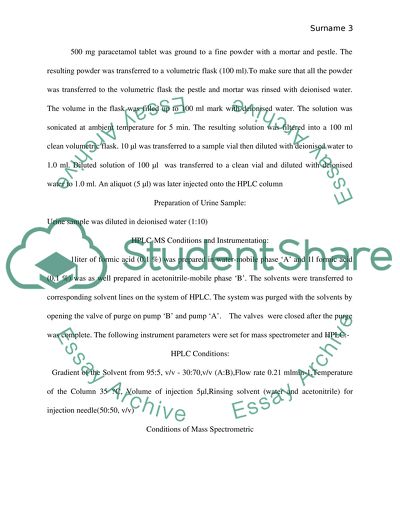Cite this document
(“Analysis of Paracetamol in Urine Using High Performance Liquid Assignment”, n.d.)
Analysis of Paracetamol in Urine Using High Performance Liquid Assignment. Retrieved from https://studentshare.org/miscellaneous/1621104-analysis-of-paracetamol-in-urine-using-high-performance-liquid-chromatography-hyphenated-to-ion-trap-time-of-flight-mass-spectrometer
Analysis of Paracetamol in Urine Using High Performance Liquid Assignment. Retrieved from https://studentshare.org/miscellaneous/1621104-analysis-of-paracetamol-in-urine-using-high-performance-liquid-chromatography-hyphenated-to-ion-trap-time-of-flight-mass-spectrometer
(Analysis of Paracetamol in Urine Using High Performance Liquid Assignment)
Analysis of Paracetamol in Urine Using High Performance Liquid Assignment. https://studentshare.org/miscellaneous/1621104-analysis-of-paracetamol-in-urine-using-high-performance-liquid-chromatography-hyphenated-to-ion-trap-time-of-flight-mass-spectrometer.
Analysis of Paracetamol in Urine Using High Performance Liquid Assignment. https://studentshare.org/miscellaneous/1621104-analysis-of-paracetamol-in-urine-using-high-performance-liquid-chromatography-hyphenated-to-ion-trap-time-of-flight-mass-spectrometer.
“Analysis of Paracetamol in Urine Using High Performance Liquid Assignment”, n.d. https://studentshare.org/miscellaneous/1621104-analysis-of-paracetamol-in-urine-using-high-performance-liquid-chromatography-hyphenated-to-ion-trap-time-of-flight-mass-spectrometer.


